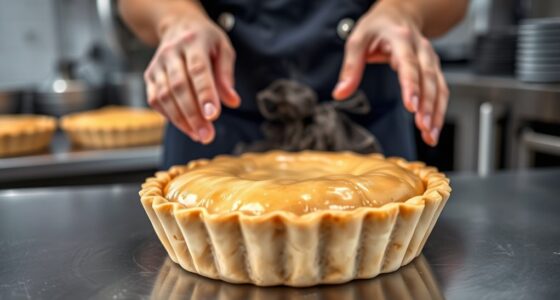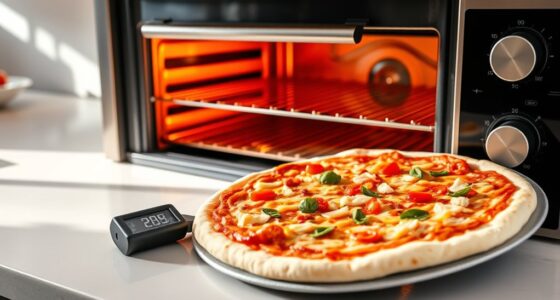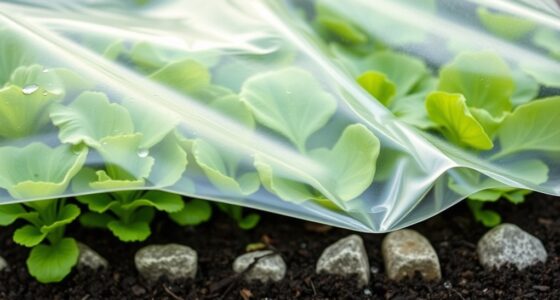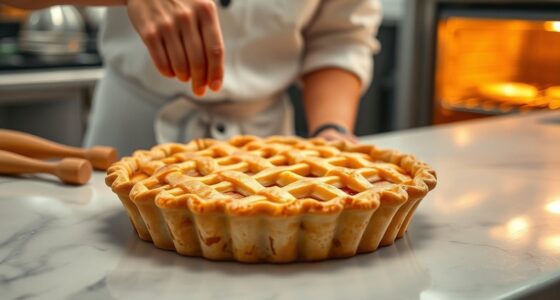When choosing between stone, steel, or cordierite cookware, safety depends on material quality, heat resistance, and maintenance. Steel, especially stainless, is inert and unlikely to leach chemicals, making it very safe for food contact. Stone and cordierite are generally safe if manufactured properly, but poor-quality glazes or treatments can pose risks. Proper care guarantees long-term safety, durability, and performance. To learn more about how each material compares, keep exploring the key safety aspects for each option.
Key Takeaways
- Steel is inert and highly food-safe, with minimal risk of chemical leaching when made from high-quality stainless steel.
- Stone’s safety depends on proper sealing and manufacturing; poorly finished stone may leach glazes or coatings.
- Cordierite is generally non-toxic, resistant to heat, and safe for food contact if produced through controlled firing processes.
- Steel offers excellent impact resistance and durability, reducing safety concerns over long-term use.
- Proper cleaning, handling, and storage are essential for all materials to prevent damage and maintain safety over time.
Comparing Material Safety and Food Contact Standards

When evaluating stone, steel, and cordierite for kitchen use, it’s vital to examine their safety and compliance with food contact standards. Material aesthetics play a key role, as you want surfaces that are visually appealing and suitable for your kitchen decor. Manufacturing processes markedly impact safety; high-quality production ensures the materials are free from harmful contaminants and adhere to strict food contact regulations. Stone offers a natural, timeless look but varies in safety depending on sealing and treatment. Steel, especially stainless steel, is durable and inert, making it highly safe for food contact. Cordierite, known for its heat resistance, is produced through controlled firing processes that minimize risks. Additionally, manufacturing quality plays a crucial role in ensuring these materials meet safety standards, as improper production can introduce hazards. Understanding these factors helps you choose materials that are both safe and aesthetically fitting for your culinary space.
Heat Resistance and Thermal Stability of Each Material
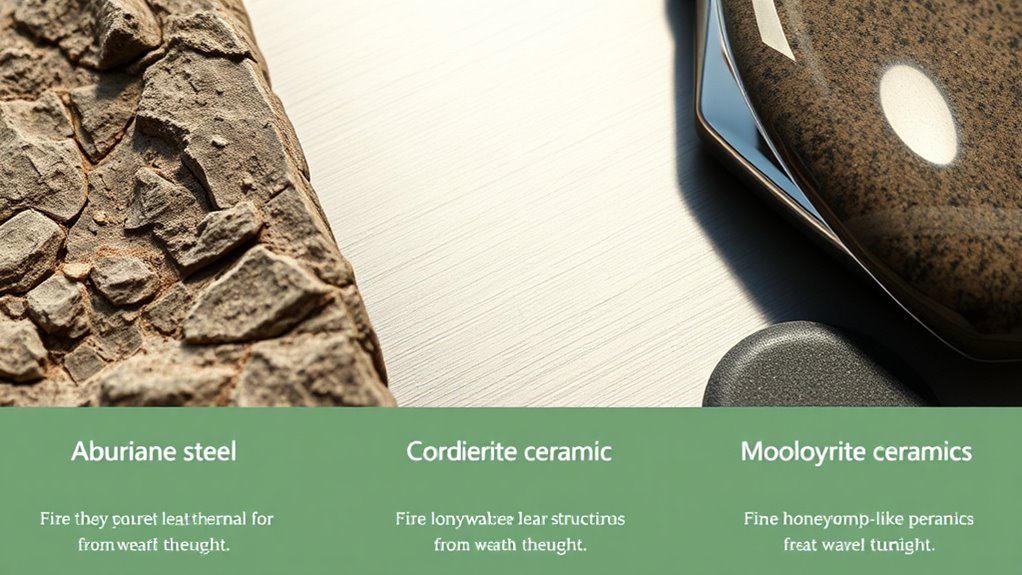
Stone, steel, and cordierite each offer distinct heat resistance and thermal stability qualities that are essential for kitchen safety and performance. Stone withstands high temperatures with minimal thermal expansion, reducing the risk of cracking. Steel has excellent impact resistance and handles rapid temperature changes well, making it durable under stress. Cordierite resists extreme heat and stays stable, but its thermal expansion can be more significant if improperly handled. Additionally, AI-enhanced materials are emerging to improve heat resistance in culinary tools. Here’s a comparison:
| Material | Heat Resistance | Impact Resistance |
|---|---|---|
| Stone | Very high, low thermal expansion | Moderate |
| Steel | Excellent, minimal thermal expansion | High |
| Cordierite | Excellent, some thermal expansion | Moderate |
Durability and Long-Term Safety Considerations
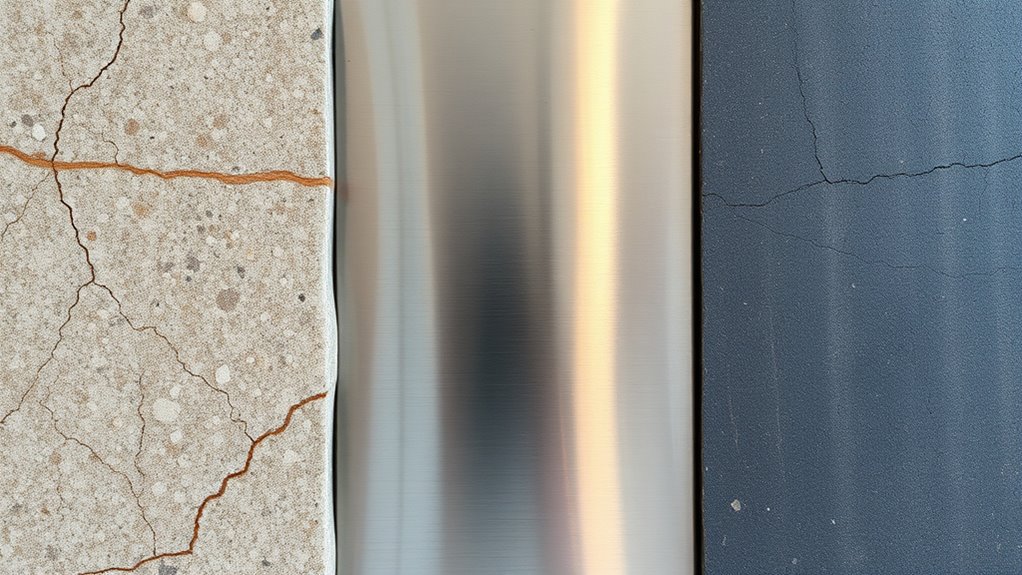
Choosing a durable material for your kitchen tools means considering how well it holds up over time and under daily use. Material longevity is key to ensuring your investment lasts, and structural integrity determines how well the material resists cracking or breaking. Stone offers excellent longevity but can be brittle if dropped, impacting long-term safety. Steel is highly resilient, maintaining strength and integrity through years of use, making it a reliable choice. Cordierite balances durability with thermal shock resistance but may chip or crack over time if mishandled. Your decision should factor in how each material maintains its structural integrity over extended use, ensuring safety and performance. Prioritizing durability means you’ll enjoy a safer, more reliable cooking experience for years to come. Additionally, vetted products in these materials are tested for effectiveness and safety, providing peace of mind in your selection.
Potential Chemical Concerns and Non-Toxicity
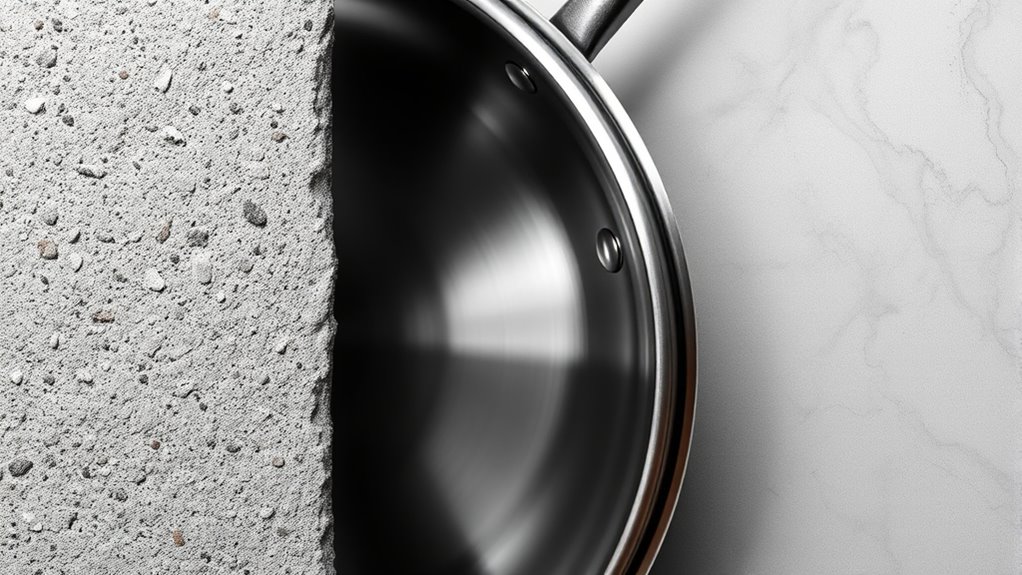
Durability is important, but safety also depends on what materials might release chemicals during use. Some cookware materials can undergo chemical leaching or toxin release when exposed to high heat. Stone and cordierite surfaces are generally non-toxic, but poorly manufactured options could contain glazes or coatings that leach harmful substances. Steel cookware rarely releases chemicals, but low-quality versions may contain nickel or chromium that could leach over time. To help you compare, here’s a quick overview:
| Material | Potential Chemical Concerns | Non-Toxic? |
|---|---|---|
| Stone | Possible glaze or coating leaching | Usually yes |
| Steel | Nickel or chromium toxin release | Usually yes |
| Cordierite | Minimal toxin release, ensure quality | Typically safe |
Always choose high-quality products to minimize chemical risks.
Maintenance and Safety of Use in Everyday Cooking
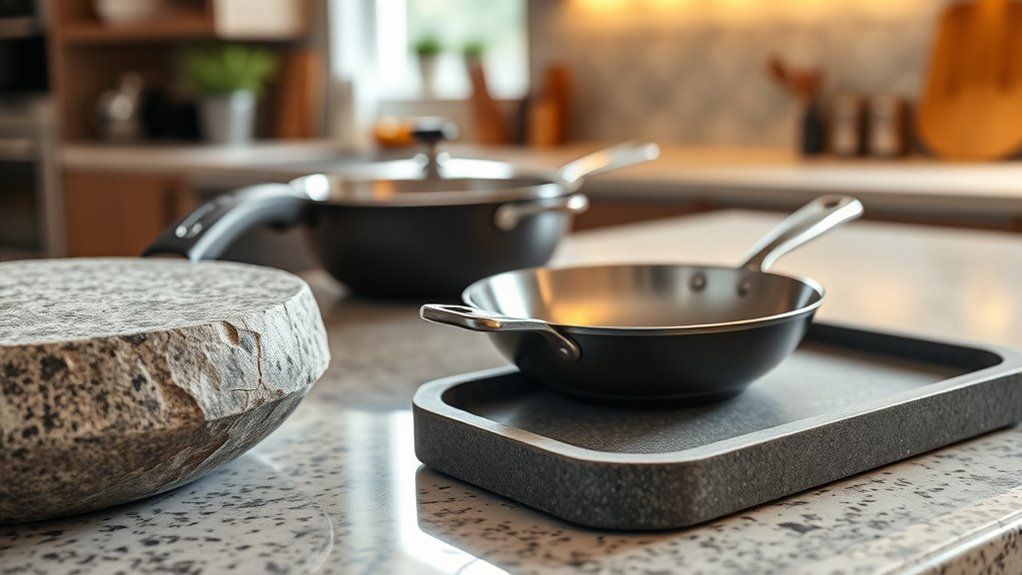
To guarantee safe and effective use of your cookware daily, it’s vital to follow proper maintenance practices and handle each material with care. Regular cleaning methods vary: stone and cordierite can be scrubbed with gentle abrasives, while steel may require more robust cleaning. Avoid using harsh chemicals on any material to prevent damage or chemical residues. Proper storage requirements are essential—keep stone and cordierite cookware in a dry, cool place to prevent cracking, and store steel cookware in a dry environment to avoid rust. Always allow cookware to cool before cleaning or storing. Handle each piece carefully to prevent chips, cracks, or warping. Additionally, understanding the personality traits of users can help tailor maintenance habits for better longevity. By maintaining your cookware properly, you ensure safety, longevity, and high-level performance in everyday cooking.
Frequently Asked Questions
How Do Stone, Steel, and Cordierite Affect Flavor Preservation?
Stone, steel, and cordierite all impact flavor retention differently. Stone and cordierite generally offer better flavor preservation because their low material porosity prevents oils and residues from seeping in, maintaining pure taste. Steel, being more porous, may absorb flavors over time, affecting freshness. Your choice depends on how well you want to preserve delicate flavors, with non-porous materials like stone and cordierite providing superior flavor retention.
Are There Eco-Friendly Disposal Options for Each Material?
You can explore eco-friendly disposal options for stone, steel, and cordierite by considering recycling options and composting methods where applicable. Steel is widely recyclable through local recycling programs, making it an eco-conscious choice. Stone and cordierite, being natural materials, can sometimes be repurposed or composted if they’re broken down or used in landscaping. Always check local guidelines to guarantee you’re disposing of these materials responsibly and sustainably.
Which Material Is Best for High-Altitude Cooking Safety?
For high-altitude cooking safety, steel is your best choice due to its durability and heat resistance. It withstands rapid temperature changes better than stone or cordierite, reducing the risk of cracking. While steel may have higher upfront costs, its longevity and resilience make it cost-effective over time. Stone and cordierite are more prone to damage at high altitudes, so steel offers greater safety and peace of mind during your cooking adventures.
Can These Materials Be Safely Used in Microwave Ovens?
Think of your microwave as a delicate dance floor, and the materials as dancers. Stone, steel, and cordierite can be safe in your microwave if they’re microwave-safe and durable. Always check labels, as not all are suitable; some may crack or spark. Properly tested materials guarantee microwave safety and durability, so your cooking keeps flowing smoothly without mishaps. When in doubt, consult manufacturer instructions for peace of mind.
How Do These Materials Impact Energy Efficiency During Cooking?
You’ll notice that stone, steel, and cordierite impact energy efficiency differently due to their thermal conductivity and insulation properties. Stone and cordierite have low thermal conductivity, which helps retain heat, making cooking more efficient. Steel, with higher thermal conductivity, transfers heat quickly but may lose it faster. Choosing the right material depends on your cooking style, but generally, materials with better insulation keep energy consumption lower.
Conclusion
Choosing between stone, steel, or cordierite depends on your safety priorities and cooking style. Think of it like selecting your trusty steed—each has its own strengths and quirks, just like fitting a saddle or wielding a sword. As you set out on your culinary quest, remember that proper maintenance keeps your kitchen safe and your cookware loyal. With a little care, your kitchen will stand strong through many a feast, much like a knight’s armor enduring the ages.


